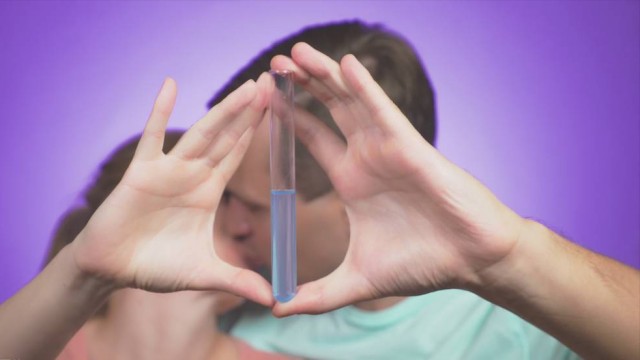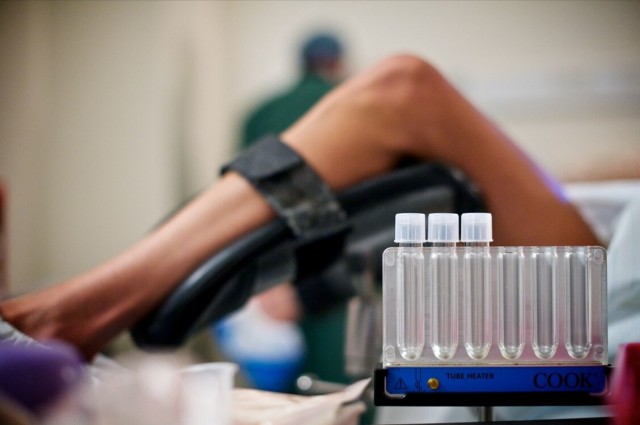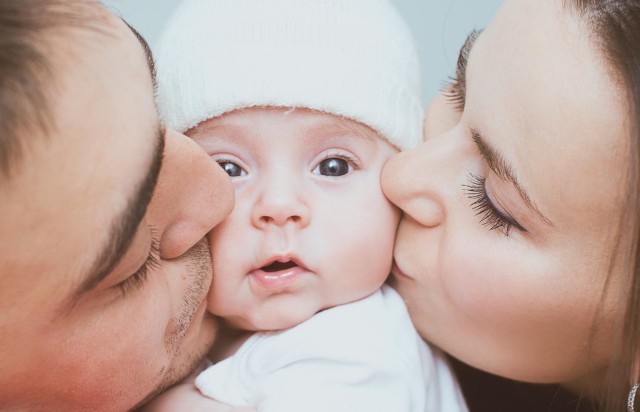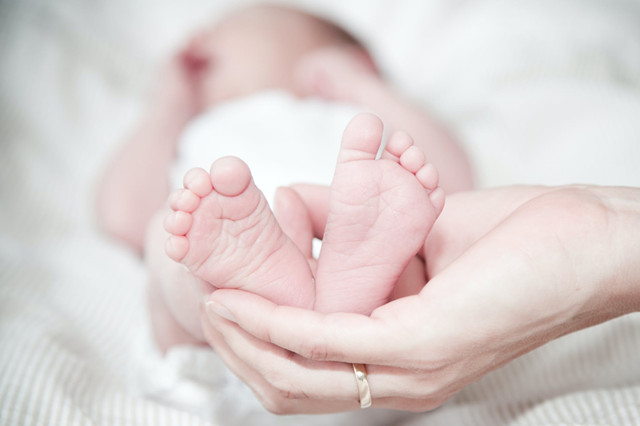赴美试管婴儿指南:从备孕到落地,全流程与费用深度解析 A Guide to IVF in the US: From Pregnancy Preparation to Birth, an In-Dept
-
赴美试管婴儿指南:从备孕到落地,全流程与费用深度解析
随着医疗水平的提升和国际化服务的发展,越来越多的家庭选择赴美开展体外受精(IVF)辅助生育。美国以其先进的实验室设备、严格的质量控制以及高素质的生殖科团队而闻名,为众多家庭带来了成功的喜讯。本文将从备孕准备、机构选择、流程介绍、费用分析到落地服务,进行系统而深入的解析,帮助有意赴美就医的家庭提前做好全面规划。
一、赴美备孕前的准备
1. 基础健康评估
在出发前6个月,建议夫妻双方前往国内医院进行全面的生殖健康体检,包括:女性的全套生殖激素检查(FSH、LH、雌二醇、AMH等)、超声卵泡、输卵管通畅性评估,以及男性精液分析、染色体核型检测等。若发现潜在问题,需及时进行干预和调理。
2. 生活方式调整
停止吸烟、戒酒、保持规律作息;合理膳食,补充富含维生素、微量元素及高品质蛋白质的食物;适度运动,保持体重在理想范围。女性可通过针灸、中医调理来改善子宫内膜环境,男性可通过增加富含锌、硒元素的食物来提升精子质量。
3. 签证及旅行准备
赴美就医需要申请B-2(旅游/医疗)签证,建议在体检报告、资金证明、就诊预约函、往返机票订单等材料准备齐全后提前预约面签。同时,提前预订往返机票和落地后的住宿,选择靠近生殖中心和有完善配套设施的住所,可有效降低往返舟车劳顿带来的影响。

二、选择合适的生殖中心与医生
1. 评价机构资质
美国生殖协会(ASRM)和临床实验室改进条例(CLIA)对辅助生殖机构的实验室质量有严格要求,选择获得相应认证、具备多年临床经验的中心尤为重要。
2. 医疗团队与成功率
除了参考中心整体的临床妊娠率与活产率,还应关注主诊医生的经验、团队规模以及实验室人员的专业背景。举例:INCINTA Fertility Center(地址:加州托伦斯)是加州知名的生殖诊疗机构之一,其主诊团队由林炳薰(Dr. James P. Lin)博士领衔,擅长个性化用药方案与胚胎培养条件的优化。
3. 就医流程与配套服务
部分中心提供一站式落地服务,包括接机、住宿、语言翻译及心理咨询。建议在咨询过程中详细了解每一步所需的时间节点及注意事项,以便合理安排行程。
三、赴美就医的主要流程
1. 首次远程咨询与体检评估
通过视频或邮件方式提交既往病历、体检报告和影像资料,由医生评估可行性并提出个性化方案,确定具体流程与所需时间。
2. 抵达后的初诊及方案确认
抵达后进行补充性检查:超声卵泡监测、激素水平复测、基础心电及腹部彩超等。临床医师会根据最新结果微调促排方案,并安排药物配送或在当地购药。
3. 促排卵阶段
在医生的指导下通过注射促排针和口服药物,刺激卵巢多枚卵泡生长。期间需要每2-3天复查一次血激素和超声卵泡,以调整用药剂量与时间。
4. 取卵与实验室操作
当主要卵泡达到成熟标准时,行促排针最终触发后约36小时进行取卵。取卵当日无痛静脉麻醉,术后当天即可休息。卵子取出后,实验室在恒温培养箱中完成精子与卵子的受精及胚胎培养。
5. 胚胎培养与监测
培养3-5天后,实验室会评估胚胎形态与分裂速度,筛选最佳胚胎进行移植。若有多枚优质胚胎,可保留于液氮罐中,以备后续移植之用。
6. 胚胎移植
在子宫内膜最适宜的窦卵期,医生通过超声引导将胚胎移植至子宫,过程通常在数分钟内完成,无需麻醉。移植后遵医嘱补充黄体支持剂。
7. 着床与验孕
移植后第9-12天可进行血清β-hCG监测,确认是否着床成功。若结果阳性,继续监测孕酮及胚胎发育情况,安排后续超声检查。
8. 随访与落地生产
若远程就诊团队提供持续远程随访,可在国内配合当地妇产医院进行孕期管理;也可继续留美至分娩。美国妇产医院分娩条件完善,24小时新生儿科及NICU支持,为母婴安全保驾护航。

四、费用深度解析
项目预估费用(美元)备注初诊及方案评估500–1,000包括影像和激素复检促排卵药物3,000–6,000视用药方案及剂量而定监测与复查(多次)1,000–2,500血检、超声及诊疗费取卵手术及实验室费6,000–10,000含麻醉及取卵费胚胎培养与检测2,000–3,500常规培养至囊胚胚胎移植2,500–5,000含移植操作费及术后支持胚胎冷冻保管(首年)600–1,200液氮罐保管费远程随访及翻译500–1,500可选项目落地生产费用(顺产/剖宫)10,000–20,000含产检、新生儿护理旅行及住宿5,000–10,000依据当地消费水平总计31,100–61,700仅供参考,因人而异五、风险与注意事项
1. 医疗风险
IVF过程中可能出现卵巢过度刺激综合征(OHSS)、多胎妊娠风险(可根据医嘱进行单胎移植以降低风险)、手术并发症等,需要严格遵医嘱并及时复查。
2. 时差与生活节奏
中美时差问题可能导致激素监测必须在固定时间进行,建议选择时差较小的西海岸城市就医。术后需保证充足休息、减少长途奔波。
3. 心理调适
辅助生殖耗时费力,可能伴随焦虑、压力。可通过心理咨询、互助小组或家人支持来缓解不良情绪。
4. 法律与税务
赴美就医应了解当地医疗保险、税务及生育政策。部分州的医院和实验室有特定的收费结构,建议咨询专业机构或律师。

五、成功落地后续建议
1. 孕期管理
无论选择留美分娩还是回国,均需与妇产专科医生保持联系,按时进行唐氏筛查、结构性超声及糖筛等常规项目。
2. 出生证明及护照
在当地医院分娩的宝宝可申请美国出生证明及护照。回国后需在使领馆办理领事认证。
3. 儿科与母乳喂养支持
医院通常提供母乳喂养指导及新生儿筛查服务,建议充分利用,以保障宝宝健康成长。
六、总结
赴美试管婴儿是一项系统工程,从备孕准备到落地生娃,每一步都需周密规划。提前做好健康评估、选择合适的生殖中心与医生、明确时间节点与预算,并合理安排旅程与生活,可以大大提升就医体验与成功率。希望本指南能够帮助更多家庭清晰认知赴美辅助生育全过程,迈向人生成长中的新篇章。
A Guide to IVF in the US: From Pregnancy Preparation to Birth, an In-Depth Analysis of the Entire Process and Costs
With the advancement of medical care and the development of international services, more and more families are choosing to travel to the US for in vitro fertilization (IVF). Renowned for its advanced laboratory equipment, stringent quality control, and highly qualified reproductive medicine teams, the US has brought success to countless families. This article will provide a systematic and in-depth analysis of the process, including pregnancy preparation, institution selection, process overview, cost analysis, and on-site services, to help families planning ahead.
I. Preparing for Pregnancy in the US
1. Basic Health Assessment
Six months before departure, it is recommended that couples undergo a comprehensive reproductive health checkup at a hospital in China. This includes: a full panel of reproductive hormones (FSH, LH, estradiol, AMH, etc.) for women, ultrasound follicle and fallopian tube patency assessments, and semen analysis and chromosome karyotype testing for men. If potential problems are identified, timely intervention and treatment are necessary.
2. Lifestyle Adjustments
Stop smoking and drinking, and maintain a regular sleep and sleep schedule. Eat a balanced diet rich in vitamins, trace elements, and high-quality protein. Exercise moderately and maintain an ideal weight. Women can improve the endometrial environment through acupuncture and traditional Chinese medicine, while men can improve sperm quality by increasing their intake of foods rich in zinc and selenium.
3. Visa and Travel Preparations
Travel to the United States for medical treatment requires a B-2 (tourist/medical) visa. It is recommended to schedule an interview in advance after preparing all necessary documents, including a medical report, proof of funds, a medical appointment letter, and round-trip airfare. Also, book round-trip airfare and accommodation in advance. Choose accommodation close to the fertility center and with adequate amenities to minimize travel time.
II. Choosing the Right Fertility Center and Doctor
1. Evaluate the Clinic's Qualifications
The American Society for Reproductive Medicine (ASRM) and the Clinical Laboratory Improvement Act (CLIA) have strict requirements for laboratory quality at assisted reproductive technology centers. It is particularly important to choose a center that has received the appropriate certifications and has years of clinical experience.
2. Medical Team and Success Rate
In addition to considering the center's overall clinical pregnancy rate and live birth rate, it's also important to consider the experience of the attending physician, the size of the team, and the professional background of the laboratory staff. For example, INCITA Fertility Center (located in Torrance, California) is a well-known fertility clinic in California. Its team, led by Dr. James P. Lin, specializes in personalized medication regimens and optimized embryo culture conditions.
3. Medical Process and Supporting Services
Some centers offer one-stop on-site services, including airport pickup, accommodation, language interpretation, and psychological counseling. It's recommended to understand the timelines and precautions for each step during the consultation process to help you plan your trip appropriately.
III. Main Process of Medical Treatment in the United States
1. Initial Remote Consultation and Physical Examination
Submit your medical records, physical examination reports, and imaging data via video or email. The physician will assess feasibility and propose a personalized plan, determining the specific process and timeline.
2. Initial Diagnosis and Plan Confirmation Upon Arrival
Upon arrival, additional examinations will be performed, including ultrasound follicle monitoring, hormone level retesting, baseline ECG, and abdominal color Doppler ultrasound. The clinician will fine-tune the ovulation stimulation plan based on the latest results and arrange for medication delivery or local purchase.
3. Ovulation Stimulation Phase
Under the guidance of the physician, ovarian stimulation injections and oral medications are used to stimulate the growth of multiple ovarian follicles. Blood hormone levels and ultrasound follicle monitoring are performed every 2-3 days to adjust medication dosage and schedule.
4. Egg Retrieval and Laboratory Procedures
Ovulatory retrieval is performed approximately 36 hours after the final triggering of the ovarian stimulation injections, when the primary follicle reaches maturity. Painless intravenous anesthesia is administered on the day of egg retrieval, and the patient can rest the same day. After egg retrieval, the laboratory fertilizes the eggs and sperm in a constant-temperature incubator and cultures the embryos.
5. Embryo Culture and Monitoring
After 3-5 days of culture, the laboratory will assess embryo morphology and cleavage rate, selecting the best embryos for transfer. If multiple high-quality embryos are present, they can be stored in a liquid nitrogen tank for later transfer.
6. Embryo Transfer
During the optimal antral ovarian phase of the endometrium, the doctor uses ultrasound guidance to transfer the embryos into the uterus. The procedure is usually completed within minutes and does not require anesthesia. Luteal support agents are administered after transfer as directed by the doctor.
7. Implantation and Pregnancy Test
Serum β-hCG testing can be performed 9-12 days after transfer to confirm successful implantation. If the result is positive, progesterone and embryo development will continue to be monitored, and a follow-up ultrasound examination will be scheduled.
8. Follow-up and Delivery
If the telemedicine team provides continuous remote follow-up, the woman can cooperate with a local obstetrics and gynecology hospital in China for pregnancy management, or remain in the United States until delivery. American obstetrics and gynecology hospitals offer comprehensive delivery facilities, with 24-hour neonatal and NICU support, ensuring the safety of both mother and baby.
IV. Cost Analysis
Project Estimated Cost (US$) Notes: Initial Diagnosis and Plan Evaluation: 500–1,000 (including imaging and hormonal follow-up testing); Ovulation Medication: 3,000–6,000 (depending on medication regimen and dosage); Monitoring and Follow-up (repeated): 1,000–2,500 (blood tests, ultrasound, and consultation fees); Egg Retrieval and Laboratory Fees: 6,000–10,000 (including anesthesia and egg retrieval fees); Embryo Culture and Testing: 2,000–3,500 (routine culture to blastocyst embryo transfer); ¥500–¥5,000 includes transfer and post-operative support; embryo cryopreservation (first year); ¥600–¥1,200 for liquid nitrogen tank storage; remote follow-up and translation; ¥500–¥1,500 for optional services; delivery costs (vaginal/cesarean); ¥10,000–¥20,000 including prenatal checkups, newborn care, travel, and accommodation; ¥5,000–¥10,000 depending on local spending habits; total ¥31,100–¥61,700. For reference only and subject to individual needs. 5. Risks and Precautions
1. Medical Risks
IVF may lead to ovarian hyperstimulation syndrome (OHSS), multiple pregnancies (single embryo transfer can be performed as directed by the doctor to reduce this risk), and surgical complications. Strictly follow the doctor's instructions and receive regular follow-up appointments.
2. Time Difference and Lifestyle
The time difference between China and the United States may require hormone monitoring to be performed at a fixed time. It is recommended to seek medical attention in a west coast city with a smaller time difference. After surgery, ensure adequate rest and minimize long-distance travel.
3. Psychological Adjustment
Assisted reproduction is time-consuming and laborious, and may be accompanied by anxiety and stress. Negative emotions can be alleviated through counseling, support groups, or family support.
4. Legal and Taxation
When seeking medical treatment in the United States, it is important to understand local health insurance, tax, and fertility policies. Hospitals and laboratories in some states have specific fee structures, so it is recommended to consult with a professional or an attorney.
V. Post-natal Recommendations for Successful Delivery
1. Pregnancy Management
Whether you choose to give birth in the United States or return to your home country, you should maintain regular contact with an obstetrician and gynecologist and undergo routine procedures such as Down syndrome screening, structural ultrasound, and glucose screening.
2. Birth Certificate and Passport
Children born in local hospitals can apply for a U.S. birth certificate and passport. Upon return to your home country, consular legalization must be obtained at the embassy or consulate.
3. Pediatrics and Breastfeeding Support
Hospitals often offer breastfeeding guidance and newborn screening services, and it is recommended that you take advantage of these services to ensure your baby's healthy growth.
Conclusion
IVF in the United States is a systematic process, requiring careful planning at every step, from pregnancy preparation to birth. A thorough health assessment, choosing the right fertility center and doctor, clarifying your timeline and budget, and arranging your travel and lifestyle can significantly enhance your experience and success rate. We hope this guide will help more families gain a clearer understanding of the entire IVF process in the United States and embark on a new chapter in their lives.
- 展开阅读全文
- 赞 收藏 阅读 2025-10-04
相关推荐
-
 来洛杉矶待产,美宝家庭值得旅游打卡的10大好去处!10 great places for families with American babies to visit when planning a
来洛杉矶待产,美宝家庭值得旅游打卡的10大好去处!10 great places for families with American babies to visit when planning a定制一款完美孕产度假规划!洛杉矶待产能去哪里玩? 圣地亚哥,是美国加利福尼亚州第二大城市,也是一个知名的旅游胜地,车程一个半小时左右。Plan the perfect ma
-
 赴美生子选址科学:为什么80%孕妇选洛杉矶尔湾? Scientifically choosing a location for childbirth in the United States: Why
赴美生子选址科学:为什么80%孕妇选洛杉矶尔湾? Scientifically choosing a location for childbirth in the United States: Why根据2025年赴美生子行业白皮书数据显示,洛杉矶地区集中了全美75%的赴美生子家庭,其中尔湾市(Irvine)又以32%的占比成为洛杉矶地区的核心枢纽。According to the

 赴美生娃必看
赴美生娃必看  洛杉矶试管助孕公司
洛杉矶试管助孕公司 0 评论
0 评论